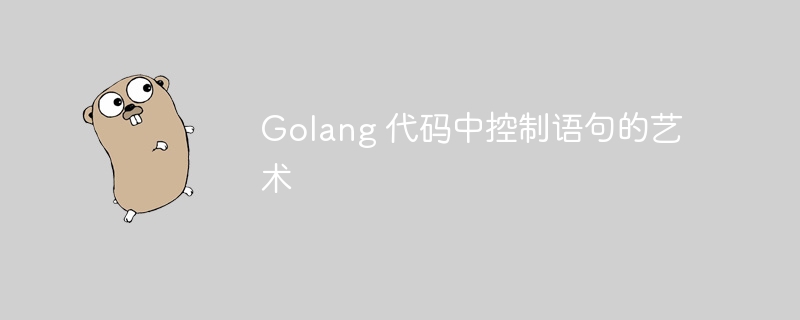
Control statements are used to control program flow in Go, including sequential statements (if/switch), selection statements (for/while/range) and loop statements (break/continue). In addition, in actual combat scenarios, based on the shopping list input by the user, control statements can be used to group items by category, such as dairy products, staple foods, fruits, meat, etc.

The art of control statements in Golang code
Control statements are crucial in programming and are used to control the flow of program execution. The Go language provides a rich set of control statements, including sequence statements, selection statements and loop statements.
Sequential Statement
if x > 0 { // x 为正数 } else { // x 不是正数 }
switch x { case 0: // x 为 0 case 1: // x 为 1 default: // x 不是 0 或 1 }
Select statement
for i := 0; i < 10; i++ { // 执行代码块 }
while x > 0 { // 执行代码块 x-- }
for k, v := range m { // k 为键,v 为值 }
Loop statement
for i := 1; i <= 10; i++ { if i == 5 { break } }
for i := 1; i <= 10; i++ { if i % 2 == 1 { continue } // 只执行偶数 }
Practical case
Consider the following scenario: processing user input, which contains a shopping list. We want to group the items in the list into categories.
Code:
package main import ( "fmt" "strconv" "strings" ) func main() { var input string fmt.Print("输入购物清单(以逗号分隔):") fmt.Scanln(&input) categories := make(map[string][]string) for _, item := range strings.Split(input, ",") { item = strings.TrimSpace(item) category := getCategory(item) categories[category] = append(categories[category], item) } for category, items := range categories { fmt.Println(category) for _, item := range items { fmt.Println(" ", item) } } } func getCategory(item string) string { switch { case strings.Contains(item, "牛奶") || strings.Contains(item, "鸡蛋"): return "乳制品" case strings.Contains(item, "面包") || strings.Contains(item, "大米"): return "主食" case strings.Contains(item, "苹果") || strings.Contains(item, "香蕉"): return "水果" case strings.Contains(item, "鱼") || strings.Contains(item, "肉"): return "肉类" default: return "其他" } }
In this example, we use a series of if statements to classify items into different categories, and a for loop to iterate through the input List and print results.
The above is the detailed content of The art of control statements in Golang code. For more information, please follow other related articles on the PHP Chinese website!
 How to define variables in golang
How to define variables in golang What are the data conversion methods in golang?
What are the data conversion methods in golang? What are the commonly used libraries in golang?
What are the commonly used libraries in golang? What is the difference between golang and python
What is the difference between golang and python What are the employment directions in Java?
What are the employment directions in Java? The difference between concat and push in JS
The difference between concat and push in JS What is the article tag used to define?
What is the article tag used to define? Baidu keyword optimization software
Baidu keyword optimization software



